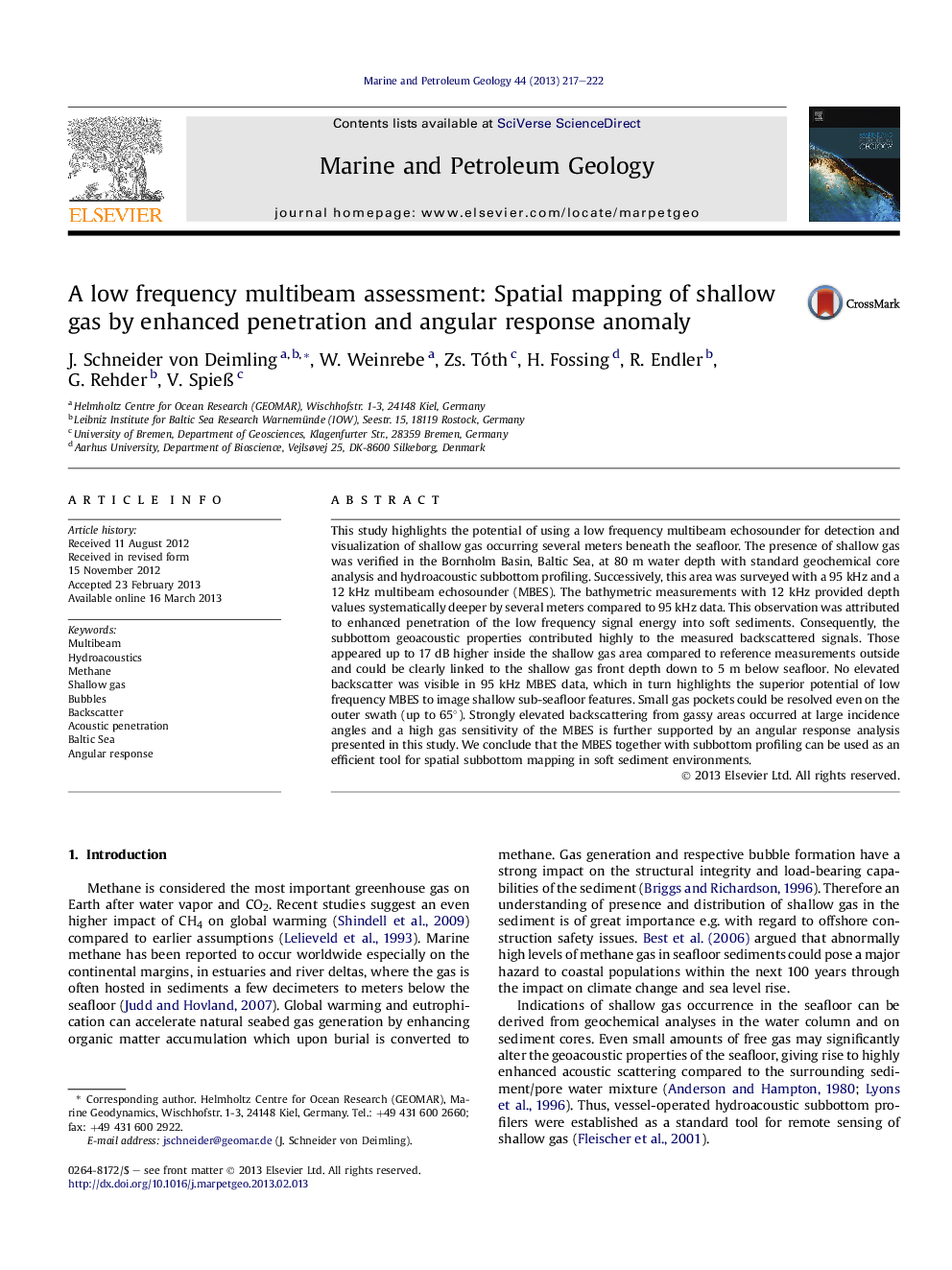| Article ID | Journal | Published Year | Pages | File Type |
|---|---|---|---|---|
| 4695696 | Marine and Petroleum Geology | 2013 | 6 Pages |
This study highlights the potential of using a low frequency multibeam echosounder for detection and visualization of shallow gas occurring several meters beneath the seafloor. The presence of shallow gas was verified in the Bornholm Basin, Baltic Sea, at 80 m water depth with standard geochemical core analysis and hydroacoustic subbottom profiling. Successively, this area was surveyed with a 95 kHz and a 12 kHz multibeam echosounder (MBES). The bathymetric measurements with 12 kHz provided depth values systematically deeper by several meters compared to 95 kHz data. This observation was attributed to enhanced penetration of the low frequency signal energy into soft sediments. Consequently, the subbottom geoacoustic properties contributed highly to the measured backscattered signals. Those appeared up to 17 dB higher inside the shallow gas area compared to reference measurements outside and could be clearly linked to the shallow gas front depth down to 5 m below seafloor. No elevated backscatter was visible in 95 kHz MBES data, which in turn highlights the superior potential of low frequency MBES to image shallow sub-seafloor features. Small gas pockets could be resolved even on the outer swath (up to 65°). Strongly elevated backscattering from gassy areas occurred at large incidence angles and a high gas sensitivity of the MBES is further supported by an angular response analysis presented in this study. We conclude that the MBES together with subbottom profiling can be used as an efficient tool for spatial subbottom mapping in soft sediment environments.
